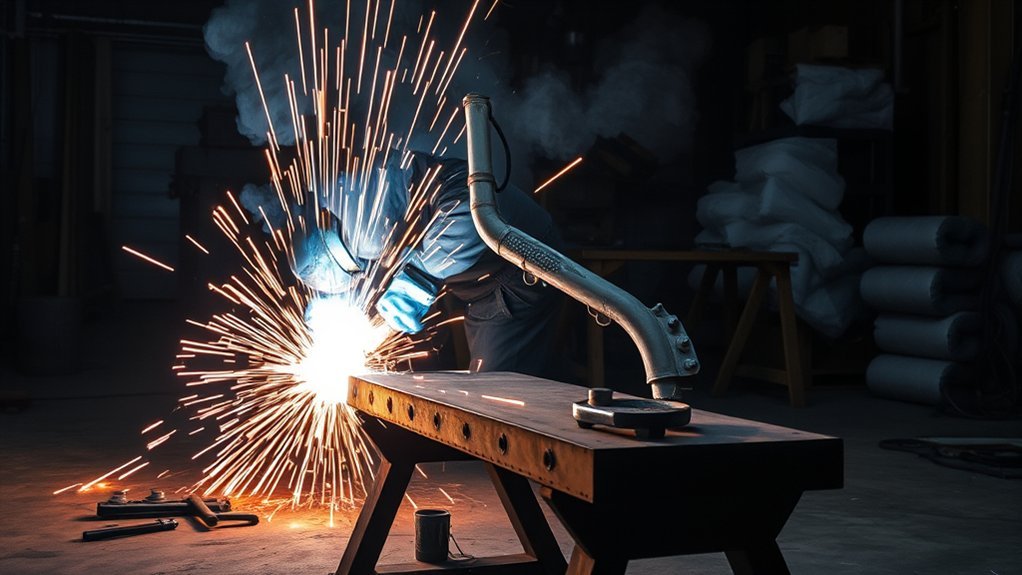Welding services generally cost between $50 and $125 per hour, depending on the type of welding and the welder’s expertise. Specialized jobs, such as TIG welding, may go as high as $200 per hour. Other factors, including material type and project complexity, can also affect costs. For instance, MIG welding usually falls between $65 and $90 per hour, while supplemental materials add about 10% to total expenses. Explore further to uncover more insights into welding project costs.
Welder Hourly Rates
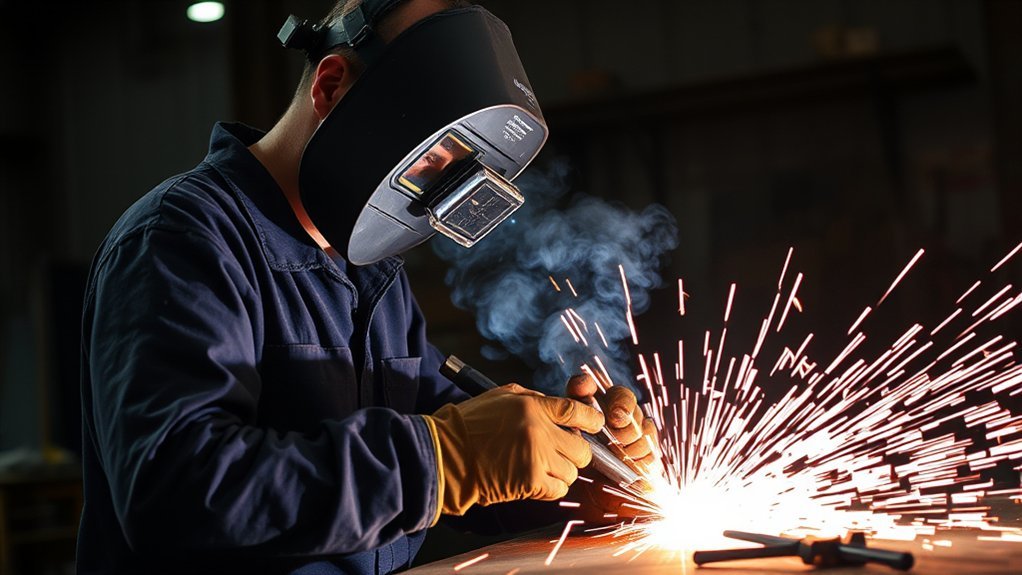
When considering welding services, understanding welder hourly rates is essential for budgeting your project. Typically, you’ll find national average rates range from $50 to $65 per hour. If you require specialized jobs, expect rates to soar up to $200 per hour.
Different welding techniques also influence costs; Stick welding usually falls between $50 to $75, MIG welding ranges from $65 to $90, and TIG welding can be priced at $75 to $125 per hour.
Welding costs vary by technique: Stick welding ($50-$75), MIG welding ($65-$90), and TIG welding ($75-$125) per hour.
It’s important to note that some welders might charge a minimum service fee, covering overhead and transportation, equating to about 1 to 2 labor hours. Labor costs generally account for 60% to 70% of your total project expenses, influenced by the complexity of the job and the materials involved.
Additionally, labor rates can vary considerably based on your geographic location and demand for certified welders skilled in various welding techniques.
Factors Affecting Welding Costs
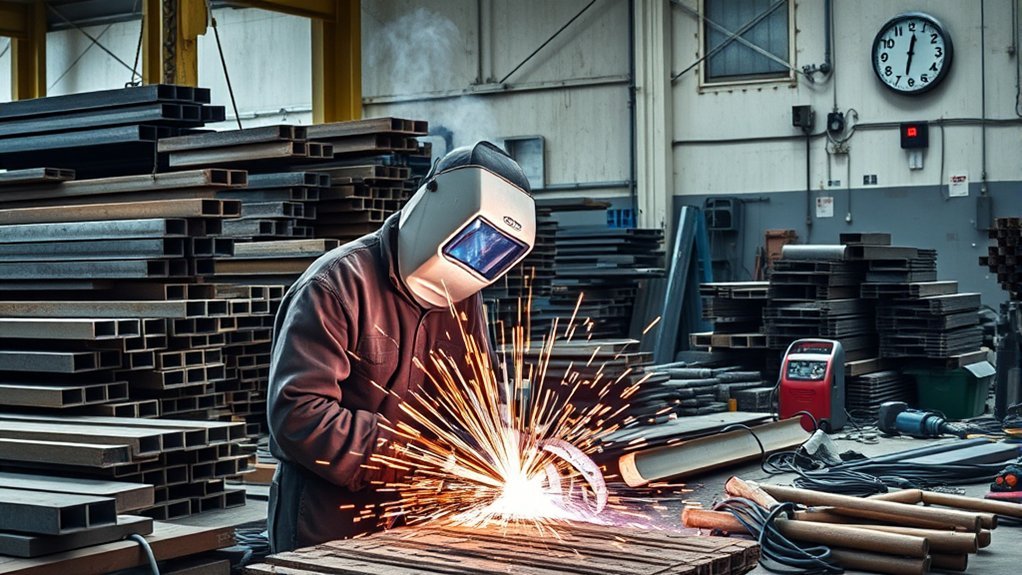
Understanding the factors affecting welding costs is essential for planning your project budget effectively. The welder’s hourly rate typically ranges from $50 to $125, influenced by their experience and specialization.
The type of metal you choose greatly impacts pricing; mild steel is the most affordable option, whereas aluminum and stainless steel can increase costs by 1.5 to 2 times.
Project complexity also plays a key role. Larger, intricate designs or hard-to-reach areas can extend the project duration, leading to higher labor costs.
Additionally, while welding techniques may vary, they often require supplemental materials such as rods and shielding gas, contributing about 10% to total costs.
Finally, your geographic location matters; urban areas usually see increased rates due to competition and overhead expenses.
Materials Required for Welding

When planning your welding project, understanding the essential materials required is vital for budgeting accurately.
Consumable supplies like flux, wire, and sanding materials can greatly influence your overall costs, with prices varying based on your chosen materials.
Opting for different metals, such as steel versus aluminum, will also impact your expenses, so it’s important to factor in these considerations early on.
Essential Welding Supplies
To effectively complete welding tasks, it’s essential to have the right necessary supplies, including flux, welding wire, grinding wheels, and sanding stones.
These materials guarantee welding safety and enhance the quality of your work. A 30-pound roll of welding wire typically costs around $40, while flux or gas can range from $120 to $150 every 1.5 to 2 weeks.
Regular use of consumables like sanding paper adds about $64 weekly to your expenses.
Remember, the choice of metal affects costs considerably; steel is the most affordable, while aluminum and stainless steel can be 1.5 to 2 times more expensive.
Prioritize effective supply sourcing to maintain your budget and guarantee peak performance in your welding projects.
Material Cost Considerations
Material costs play a considerable role in the overall budget of any welding project. Essential materials include flux (gas), wire, grinding wheels, sanding stones, and paint, which can add up quickly.
For instance, consumables like sanding paper can average around $64 weekly, while a 30-pound roll of wire costs about $40. Additionally, flux or gas expenses typically range from $120 to $150 every 1.5 to 2 weeks.
Material pricing varies greatly based on metal type; steel is generally the most affordable, while aluminum and stainless steel can be 1.5 to 2 times more expensive.
Fluctuations in material prices, particularly for steel, can lead to substantial changes in project budgeting, with steel sticks costing between $44 and $125.
Types of Welding Projects
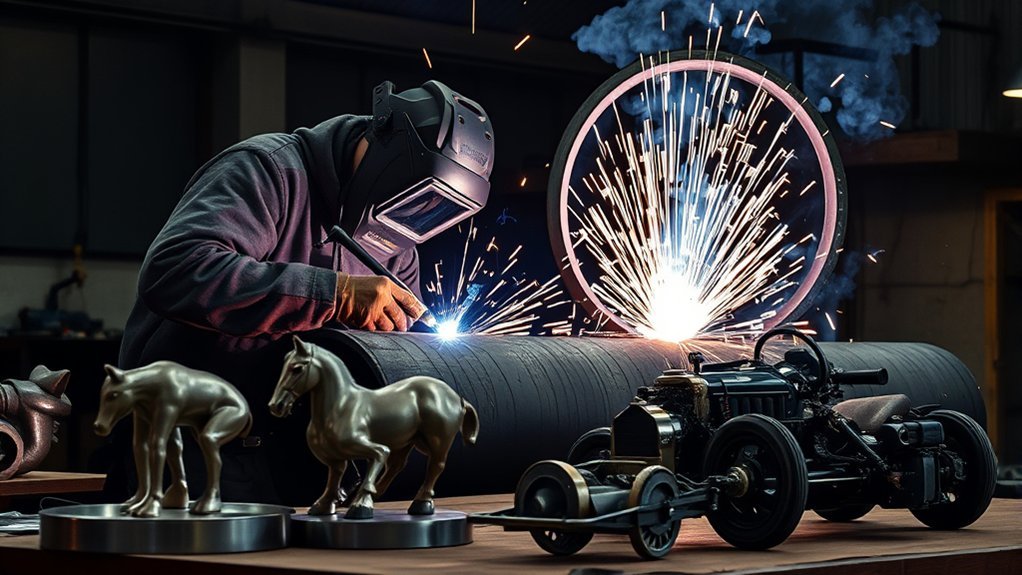
Welding projects can be categorized into several types, each with distinct requirements and costs. For example, simple repairs like small metal brackets fall on the lower end of the price spectrum, starting around $124.
In contrast, complex structural welding projects demand advanced welding techniques, considerably increasing your expenses. MIG welding typically costs between $65 and $90 per hour, while TIG welding can range from $75 to $125 per hour due to its precision.
The type of metal also influences costs—mild steel is the most economical, while aluminum and stainless steel can be 1.5 to 2 times more expensive.
Don’t forget that additional materials, such as flux and wire, can add about 10% to your total costs.
Finally, geographic location plays a role, with urban areas generally seeing higher rates due to increased competition and overhead.
Different Kinds of Welding

Understanding the various kinds of welding methods is essential for selecting the right approach for your project. Each welding technique comes with its own advantages and costs, which can greatly impact your budget.
Here are four common welding techniques:
- Shielded Metal Arc Welding (Stick Welding): Versatile and widely used, costing $50 to $75 per hour.
- Gas Metal Arc Welding (MIG): Known for speed and ease, with rates between $65 and $90.
- Gas Tungsten Arc Welding (TIG): Offers high-quality, precise welds, making it the most expensive at $75 to $125 per hour.
- Flux-Cored Arc Welding (FCAW): Ideal for heavy-duty applications, costing $55 to $90 per hour.
When choosing a welding technique, consider not just the labor costs but also the materials and welding safety protocols necessary for each method.
This guarantees you make informed decisions for your welding project.
Tips for Hiring a Welder
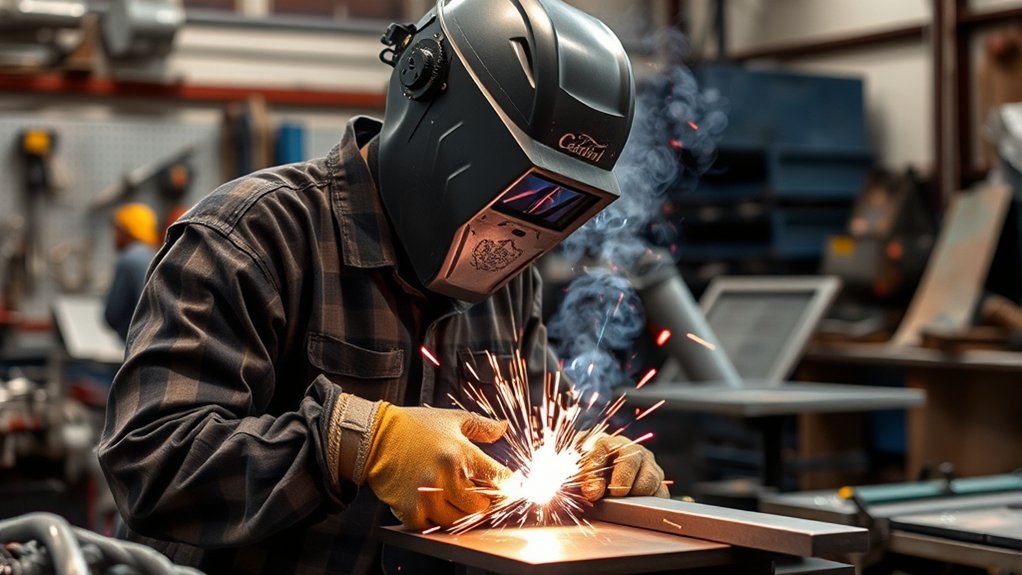
How can you assure you hire the right welder for your project? Start by requesting a free estimate before any work begins. This not only helps you understand potential costs but also guarantees transparency.
Provide detailed project information and photos so welders can give you accurate estimates tailored to your needs.
Next, verify the welder’s skills and experience relevant to your specific project, as this directly influences the quality of work. It’s essential to check for welding certifications, confirming that the welder is qualified and adheres to industry standards, which safeguards against poor workmanship.
Finally, explore customer reviews to gauge the welder’s reliability and the quality of their services. These insights help you make an informed hiring decision, ensuring that you choose a professional who meets your project’s specific requirements.
Estimating Your Welding Project Costs
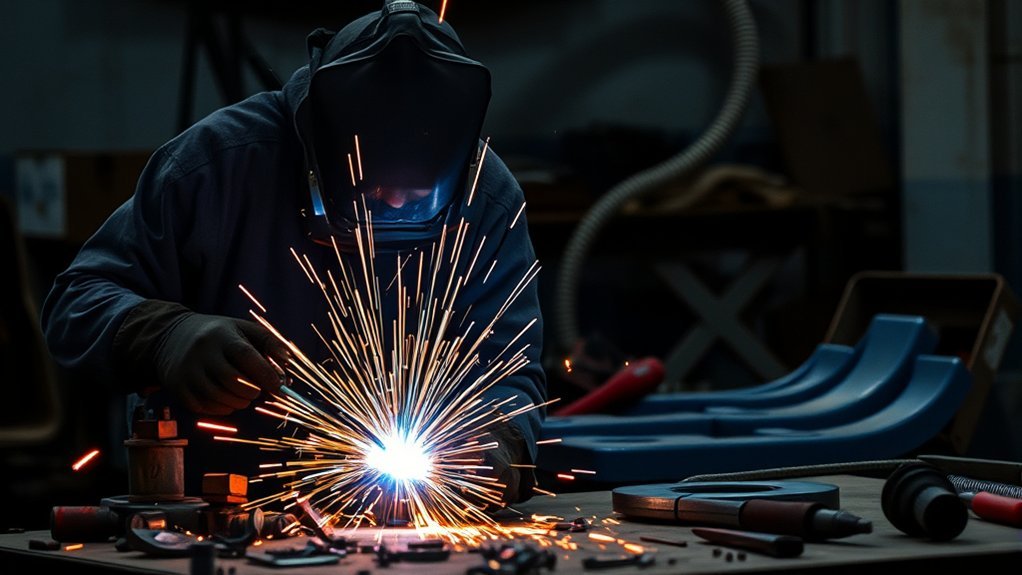
Accurate cost estimation is essential for any welding project, making sure you stay within budget while achieving your desired outcomes.
To effectively create project estimates, consider the following key factors for a thorough cost breakdown:
- Labor Costs: Expect hourly rates between $50 and $125, depending on the welder’s experience and project complexity.
- Material Selection: Mild steel is the cheapest option, while aluminum and stainless steel can be 1.5-2 times more expensive.
- Project Complexity: Intricate designs and difficult accessibility can greatly increase labor costs, which account for 60% to 70% of expenses.
- Detailed Information: Provide clear project details and photos to your welder to make sure accurate estimates and avoid surprises.
Frequently Asked Questions
What Qualifications Should I Look for in a Welder?
You should look for welding certifications that verify skills and safety practices. Additionally, consider a welder’s experience, as hands-on knowledge can greatly impact the quality and reliability of the welding services you receive.
How Can I Ensure the Quality of Welding Services?
To guarantee quality in welding services, check for welding certifications and adherence to quality standards. Verify the welder’s experience, review past projects, and ask for references to confirm their expertise and reliability.
Are There Any Warranties or Guarantees for Welding Work?
Yes, many welding services offer warranties or guarantees. You should inquire about warranty types, such as workmanship or materials, and ask for guarantee details to ascertain proper coverage for any potential issues that might arise.
What Is the Average Project Duration for Welding Services?
Welding project timelines vary widely; while some tasks take hours, others might stretch for weeks. Factors affecting duration include project complexity, materials used, and your specific requirements. Understanding these elements helps you plan effectively.
Can I Provide My Own Materials for the Welding Project?
Yes, you can provide your own materials for the welding project. Just make certain they meet the project specifications and are suitable for material sourcing. This can enhance quality and potentially lower overall costs.
Conclusion
In conclusion, while welding services might seem like an investment, they often yield significant returns in durability and safety. By understanding the various factors influencing costs—from hourly rates to project specifics—you can make informed decisions that align with your budget and needs. Remember, a skilled welder isn’t just a laborer; they’re an artisan, crafting solutions that withstand the test of time. So, as you begin your project, approach it with clarity and confidence for best results.

